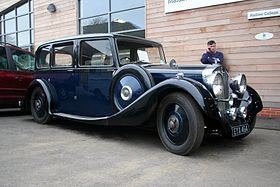Class Large luxury | ||
 | ||
Production 1937-1938 public sales starting 193644 made Designer Charles Van Eugen (1890-1980) Body style chassis4-light sports saloon6-light saloonlimousine Layout Front engine rear wheel drive | ||
Desv o antes de la autovia a la muela
Autovia was a short lived brand of British car from Coventry existing from 1935 to 1938 with production starting in January 1937. The venture was ambitious and even included setting up a school for chauffeurs. The cars were expensive and it was a market sector well served by other companies. 44 cars were made.
Contents
- Desv o antes de la autovia a la muela
- Yamaha yz 250 en autovia desbocada wheellie 2 tiempos 2 strokes
- Large luxury cars
- Specification
- Pricing
- References
Yamaha yz 250 en autovia desbocada wheellie 2 tiempos 2 strokes
Large luxury cars
The company was created by Riley as a subsidiary to produce large luxury cars and a new factory was built. A 2849 cc 90°V-8, triple camshaft engine was developed from a pair of 1½-litre Riley engine blocks and coupled to either a conventional four speed manual gearbox or in a few cases a pre selector unit bought from Armstrong Siddeley. Drive was to the rear wheels through a live axle with worm gear final drive.
Three body types were advertised, a Sports saloon, a Special Saloon with extra leg room at the expense of boot space and a limousine mostly built by Arthur Mulliner of Northampton who were London distributors. The car was also available as a bare chassis.
The venture failed when Riley went bankrupt. When they were taken over by the Nuffield Organisation Autovia was not resurrected.
There were thought to be eight of these cars remaining in 2008.
The limousine was considered remarkable for its width being more than its overall height yet the floors were flat and a tunnel and wells avoided at the back. "The general low set helps stability" said The Times, "the models are well equipped, as they should be for the price".
The Autovia was also available as a bare chassis
Specification
The specially designed chassis frame permits a low overall height and low floor line.
In addition to the details in the box on the right:
Pricing
In a prior announcement 10 October 1936 Victor Riley revealed there would be two models available in addition to the bare chassis all with an automatic clutch, a preselective gearbox and a worm driven back axle. Prices would be:
The London distributors were Arthur Mulliner Limited of 54 Baker Street.
